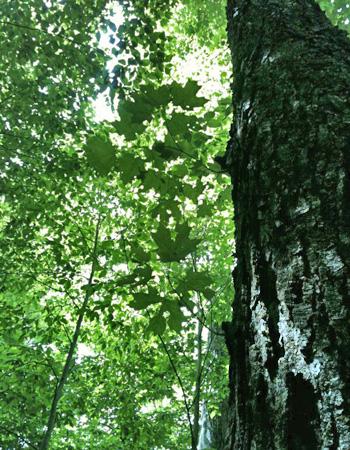Integrating Effects of Climate Change, Acidic Deposition and Insect Defoliation on Sugar Maple (Acer saccharum) Growth and Yield in the Northern Forest

Sugar maple has experienced a decline disease throughout much of the Northern Forest, but the causes behind this decline are not fully known. Three primary stressors – acid rain, insect defoliation, and climate change – are known to affect sugar maple growth and health, but in combination, these factors may have more complex effects. Little is known about the sensitivity of sugar maple to a changing Northern Forest climate – or how chronic soil acidification or changing insect populations might shape the species’ climate vulnerability.
In the Adirondack Mountains, NSRC researchers investigated potential interactions between climate and soil influences on long-term sugar maple growth patterns. To do this, researchers analyzed tree-ring data from the best-replicated network of sugar maple populations yet developed for the species in the Northern Forest region.
Researchers observed a dramatic decline in maple growth rates across the Adirondack region since the 1980s. Growth declines were consistent for most populations, with 3 of 4 trees experiencing a downward trajectory in growth despite differences in stand age and soil fertility. The period of growth decline coincided with a period of rapid warming in the Adirondacks, but researchers found that the growth responses of sugar maple to changes in temperature and precipitation were complex and changing over time. Defoliation events also have contributed to reduced growth during this period. These factors will shape the future of sugar maple growth and health in the Northern Forest, and should be considered in the management of this economically and ecologically significant species in the region.
